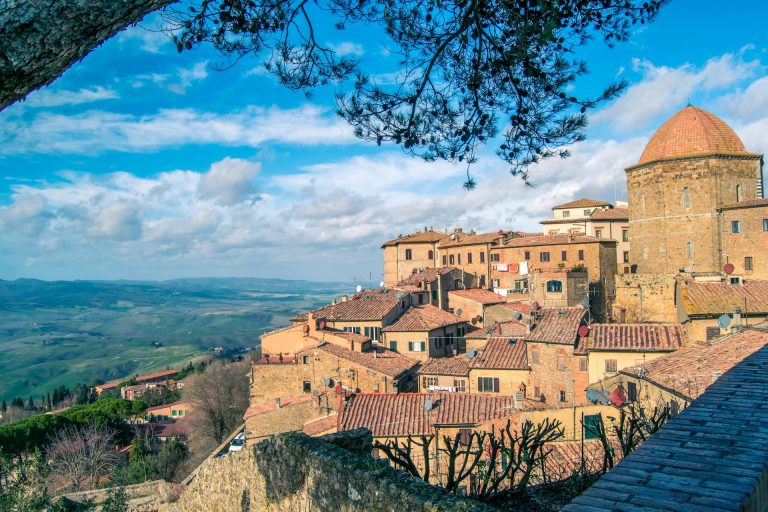On quiet mornings, light pulls attention to texture — terracotta tiles, vine-wracked stone walls, wide open shutters. Espresso steams on the worn wooden table, and the family drifts over, grabbing chairs, laughing about something. That’s Mediterranean living — warm and inviting.
For anyone into home design, Tuscan and Italian house plans are especially full of ideas. Slowing down comes naturally here. The light, the textures, the open spaces, all invite you to pause. Want to try out these home designs? Here’s a closer look at what makes it so special.
Living the Italian Dream
Italian design feels balanced. It often leans on even proportions, soft palettes, and clear, open rooms. In classic villas, you will see symmetry, tall windows, and long sightlines. Modern Italian homes keep the old rhythm and then personalize it. Bright rooms and fluid layouts remain. But you can add personality with a daring tile, a cozy nook, or a pop color.
Connection is also the pivot of an Italian-inspired house. The kitchen, often the hub, draws people in with stools pushed up to the island, a low hum of conversation while a pot simmers. And once the plates are cleared, nobody is in a hurry — conversation continues with glasses in hand. Another thing you might love is how the indoors and outdoors almost merge in many modern Italian homes. Open the doors, and the terraces turn into extra rooms. The space feels airier, freer.
What makes this style appealing is how it shapes daily life. Rooms with wide arches feel open. Uncluttered counters and tables keep the chaos away. And touches of wood, stone, and linen add texture and warmth. Spaces that flow like this make hosting simpler. Open, yes — but still intimate and welcoming.
Want a bit of Italy at home? Go simple. Think sunlit rooms and quiet color: creams, warm beiges, the green of an olive leaf. Add a few character pieces (handmade pottery is great) and skip the flawless finish. Allow wood and stone to mellow; a few scuffs or small cracks actually give the space a story. These touches make the home feel lived in.
Tuscan Homes Full of Rustic Warmth and Ease
Tuscan house plans offer rustic, lived-in, subtle elegance. The walls are heavy with stone, which keeps interiors pleasantly cool when the sun is high. The red clay roofs catch the sunset glow. And outside, courtyards stretch between olive and lavender plants.
This design favors a quieter life. Floor plans orient rooms towards the sun to pull light in from small windows and wide ones alike, so every hour shifts the mood of the interior. That layout makes everyday things — reading, cooking, eating — feel easy. Then there’s the texture everywhere: stone that’s rough to the touch, timber dark with age, iron that’s seen seasons. That wornness makes it feel lived in.
There is also a practical side to Tuscan design. The thick stone walls keep a room cool in hot weather by storing heat and releasing it slowly. That is thermal mass at work. Modern insulated construction or thin stone veneers may not produce the same effect. But thermal mass works best in places that cool off after sunset. Planning for passive cooling means thinking not just about wall construction but also the difference between daytime and nighttime temperatures.
But you don’t need a farmhouse to get that Tuscan feel. Even a small city flat can do it. Imagine this: potted herbs on the balcony and the afternoon sun warming your terracotta walls. A worn table, a stone patch on the wall, a lamp that gives off soft light in the evening. These small, imperfect things make even an apartment feel rustic and rooted.
Finding the Mood You Want for Your Home

What should hitting your front step feel like? Calm and airy? Then Italian house designs might be your north star. Warm and grounded? Tuscany homes may call to you more. Both paths lead to homes that favor good materials and comfortable living, so there is no wrong choice.
If you like both, mix them. These two traditions share a love of sunlight and social gatherings. That makes them easy to combine. Use the clean lines and bright windows of Italian design with Tuscan textures. A streamlined sofa under a wood beam will look deliberate and lived-in. A tile floor in a neutral tone pairs well with a heavy wooden table.
But be practical. If you entertain, think about how people move through the house. Put the sofa where people naturally face each other, not backed against the door. If you chase morning light, pick the window with the best glow and tuck a tiny table there — perfect for morning coffee. For easy care, pick wood, tile, or throw rugs that wear well with time. These small moves keep the space both handy and welcoming.
And always try one small change first. Swap a harsh overhead fixture for a pendant that gives softer light. Replace heavy curtains with linen that breathes. Add a rug that pulls color from the outdoors. These tiny changes can easily shift the mood without asking for a complete renovation.
Conclusion
Italian and Tuscan houses are less about style and more about moments. A courtyard full of laughter. A thick wooden table with dents and stories from years of meals had. It’s less about perfect lines and more about warmth, connection, and things that last.
Refined Italian calm or a Tuscan rustic edge — either way, the result is similar. You’ll catch yourself lingering terrace over a cup of tea in the afternoon, looking out at the street, or eating dinner around the kitchen counter. Those little shifts turn a pretty room into a lived-in life.













